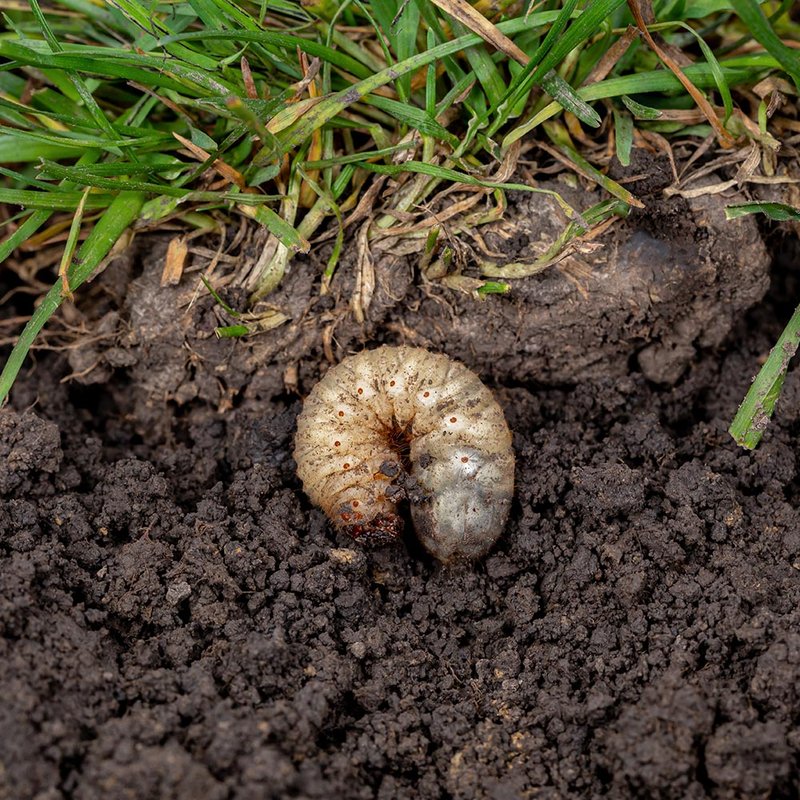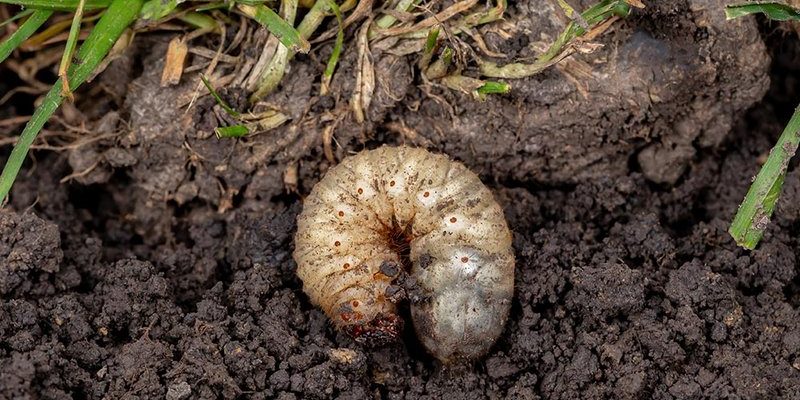
In this guide, we’ll explore several methods to help you spot these pesky little creatures without making a mess of your landscape. Whether you suspect grubs are causing your grass to brown or your plants to wilting, understanding how to identify them can save you time and effort. And trust me, once you recognize the signs of grub worms, diagnosing any problems in your garden will feel like a walk in the park.
Understanding Grub Worms
Before we jump into identification, let’s take a moment to understand what grub worms actually are. Grubs are the larval stage of various beetles, with Japanese beetles being among the most notorious. They typically have a soft, C-shaped body and are white or cream-colored. Think of them as the toddler stage of pests—growing fast and ready to cause havoc.
So, why should you care? Well, grub worms love to feast on the roots of your grass and other plants. This can lead to brown patches in your lawn and wilting plants in your garden. If left unchecked, they can cause extensive damage that may require costly repairs.
Now, you might be wondering how to identify these critters without uprooting your beloved plants. Here’s the thing: there are several signs to look for, and many of them involve just observing your garden or lawn closely.
Visual Signs of Grub Infestation
The first step in identifying grub worms is to look for visual signs. If you go outside and notice patches of grass that are turning brown or feel spongy when you walk on them, that’s your cue to investigate further. These areas often indicate that the roots are being eaten away by grubs.
Another thing to keep an eye out for is the presence of birds or animals. If you see birds pecking at your lawn or raccoons digging around, they’re likely after grubs. Birds are like the detectives of the animal world—they’ll often help you spot trouble before it becomes a big issue.
Lastly, check for the presence of dead grass. Affected grass may easily be pulled back like a carpet, revealing bare soil underneath. This can be a telltale sign that grubs are munching on the roots below the surface.
Checking for Grub Damage
Once you’ve spotted potential signs of grub worms, it’s time to dig a little deeper—figuratively speaking! One way to assess damage is by conducting a simple tug test. Gently pull on a patch of grass. If it comes up easily with little resistance, it’s likely that the roots are damaged because of grubs.
Additionally, look out for patches of grass that seem to wilt or die quicker than the rest. This uneven growth can signal an underlying problem. Remember, if your lawn looks unhealthy and you see one or more of these signs, it’s time to investigate further.
It’s also important to keep in mind that other pests can cause similar symptoms. Chinch bugs and other insects can also damage grass, so be sure to catalog your observations.
Using a Soil Probe
If you want to take your investigation to the next level without digging, consider using a soil probe. This handy tool allows you to reach into the ground and take out a core sample without disturbing too much of your lawn. It’s like a surgeon making a small incision instead of a full surgery.
To use a soil probe, simply insert it into the ground in a suspected area and then pull it back out to examine the sample. Check for any signs of grubs—usually, you’ll be looking for that C-shaped, white body. If you see one or more grubs, it’s a good indicator that you might have an infestation.
You might be thinking, “Isn’t this going to disturb the soil?” Not really! A soil probe minimizes disruption, allowing you to keep the inspection focused and efficient.
Behavioral Signs of Grub Activity
Sometimes, it’s not just what you see but what you observe happening around your lawn that can provide clues. For instance, if you notice an increased number of predators like birds or beetles in your yard, they might be attracted to the presence of grubs below the surface.
Pay attention to the time of year, too. Grub worms are most active in late summer and early fall. During these months, you might notice more birds around or other signs of wildlife activity. This can be a good indicator that you’re dealing with grubs.
Additionally, if you see patches of grass that are suddenly soft or spongy underfoot, this can signal that there’s damage below, likely from these critters. Trust your instincts—if something seems off, it’s worth investigating further!
Performing a Water Test
If you’re still unsure about whether you have a grub infestation, you can conduct a simple water test. This involves watering a specific area of your lawn thoroughly. After about 20-30 minutes, check to see if any grubs float to the surface.
Grubs can’t withstand standing water, so they often rise to the top when the soil is saturated. This little trick can help you pinpoint if grubs are lurking underneath without having to dig. It’s quick and easy!
Remember, this method works best when you’re already suspecting grubs. If you’ve got very healthy grass, the chances of seeing grubs surface will be lower.
When to Seek Professional Help
If you’ve gone through these steps and still can’t figure out whether you have a grub problem or how bad it is, it might be time to bring in the experts. Many lawn care professionals can assess your situation and determine the best course of action.
Don’t hesitate to reach out to a local extension office or a pest control service. They can provide insights and options tailored to your specific environment, especially if you live in an area known for grub problems.
Remember, early detection can prevent bigger headaches down the road. So, if in doubt, it’s always better to consult someone who knows the ins and outs of pest management.
In conclusion, identifying grub worms without digging doesn’t have to be a daunting task. By observing for visual signs, checking for damage, and using tools like soil probes and water tests, you can gain valuable insights into the health of your lawn. Keep an eye out for behavioral indicators and don’t be afraid to seek help if needed. The sooner you address the issue, the healthier your garden will be! Happy gardening!

